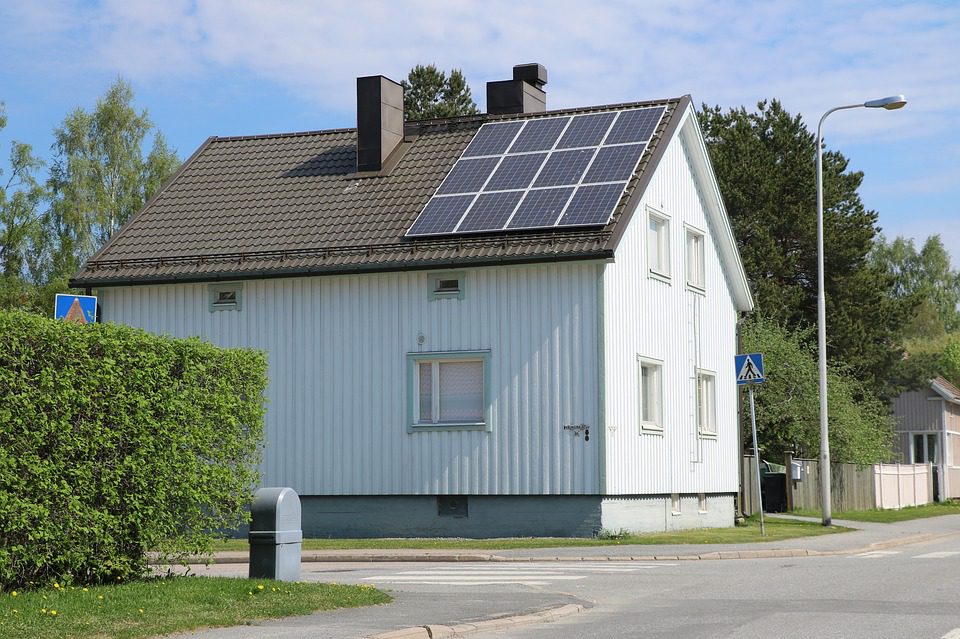5 Ways to Go Green and Reduce Your Taxes
The US tax code includes several green initiatives to incentivize homeowners to go green. These green initiatives take the form of tax credits. Tax ‘credits’ have a more direct effect on your tax bill than the more familiar tax ‘deductions.’
Going green when you build or renovate your home doesn’t need to be expensive. If you are on the fence about going green, then these tax credits might make it worth choosing the greener option.
The Nonbusiness Energy Property Credit covers any energy improvements made from 2005. The expiration has been extended until December 31, 2021, with a good chance for even further extensions. This credit has a lifetime cap of $500 and applies to a wide range of energy-saving products. These products include, but are not limited to:
- Home insulation
- Green hot water boilers and furnaces and heaters
- Electric heat pumps and water heaters
- Central air conditioning systems
- Exterior doors, windows, and skylights
- Green roofing materials
- Green kitchen stoves
Products need to meet standards of energy efficiency set by the IRS to qualify for the Nonbusiness Energy Property Credit. Companies advertise this qualification on their products – it won’t be hard to find.
The Residential Energy Efficient Property Credit is a variation on the Nonbusiness Energy Property Credit that applies specifically to the property’s energy sources. The Residential Energy Efficient Property Credit is newer, applying to qualifying home improvements made during or since 2018. The Residential Energy Efficient Property Credit doesn’t necessarily have the $500 lifetime cap, but it applies to a shorter list of eco-friendly home improvements.
The home improvements that qualify for the Residential Energy Efficient Property Credit are:
- Solar water heaters. Owners must derive at least half of the energy used by the property for water heating from the sun.
- Solar panels. Some solar roofing tiles and solar roofing shingles serve as structural elements of the roof as well as collectors of solar electricity. These dual-purpose solar roofing tiles and solar roofing shingles qualify for the tax credit.
- Wind turbines. Qualified small wind energy turbines can generate electricity for your home and may qualify for this tax credit.
- Geothermal heat pump. Qualified geothermal heat pumps use the ground or groundwater as a thermal energy source to heat or cool your home.
- Fuel cells. Fuel cells and associated components use electrochemical processes to generate electricity.
Restrictions on the Residential Energy Efficient Property Credit include the following:
- Not on rental property. This credit does not apply to rental properties or commercial properties, although there are different green-promoting credits that are available in these situations. The Residential Energy Efficient Property Credit is for improvements made on a home owned by the taxpayer, although it does not need to be the taxpayer’s main home.
- Not overseas. This credit only applies to homes located in the United States.
Regulations related to claiming the Residential Energy Efficient Property Credit include the following allowances:
- Newly-built homes. Property owners may claim the Residential Energy Efficient Property Credit for a new home under construction as well as for the renovation of an older home.
- Installation costs. Installation costs, which are often as high as materials costs, qualify for tax relief.
- Second homes. The Residential Energy Efficient Property Credit cannot be applied to rental homes, but it can be applied to second homes of any kind: cabins, beach homes, city apartments, vacation homes, winter homes, mobile homes, coops, condos, house boats, etc.
- No dollar limit. Amazingly, there is no dollar limit on the credit. The sky is the limit for credits on energy-efficient products for your home.
- Carry-overs. If the tax credit is more than the taxes you owe, you may carry over the unused portion of the credit to the tax return for the following year. For example, if you install $30K-worth of solar panels but only owe $20K in taxes, you can carry over $10K of the credit to the following year, along the following sliding scale:
- Tax credit amount. The amount of credit you may claim depends on when the energy-saving device began functioning on your property, or, in other words, the date you placed the device in service. Although there is no dollar limit to the amount of credit you can claim, you are not allowed to claim 100% of the costs of the improvements. You can claim a percentage of the costs of the improvement as follows:
- 30% after Dec 31, 2016, but before Jan 1, 2020,
- 26% after Dec 31, 2019, but before Jan 1, 2021
- 22% after Dec 31, 2020, but before Jan 1, 2022
- Form 5695. To claim the credit, you will need to file Form 5695 as part of your tax return. Many online programs are equipped to help you with this form, as are your local tax lawyers.
Thanks to the two tax credits described in this article, ‘going green’ as a homeowner can be both satisfying and strategic.
As you pursue these tax credits, you’ll want to make sure that any existing tax debt that you may have is resolved. Whether you’re dealing with a potential IRS audit, unfiled tax returns, tax debt or payroll tax issues, contact our tax resolution specialists. We have helped over 15,000 clients resolve their tax debts in the most financially advantageous way, and we can do the same for you.







